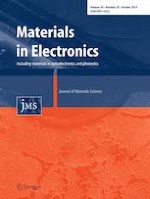21.09.2019
Highly sensitive toxic gas molecule sensor based on defect-induced silicene
Erschienen in: Journal of Materials Science: Materials in Electronics | Ausgabe 20/2019
EinloggenAktivieren Sie unsere intelligente Suche, um passende Fachinhalte oder Patente zu finden.
Wählen Sie Textabschnitte aus um mit Künstlicher Intelligenz passenden Patente zu finden. powered by
Markieren Sie Textabschnitte, um KI-gestützt weitere passende Inhalte zu finden. powered by
